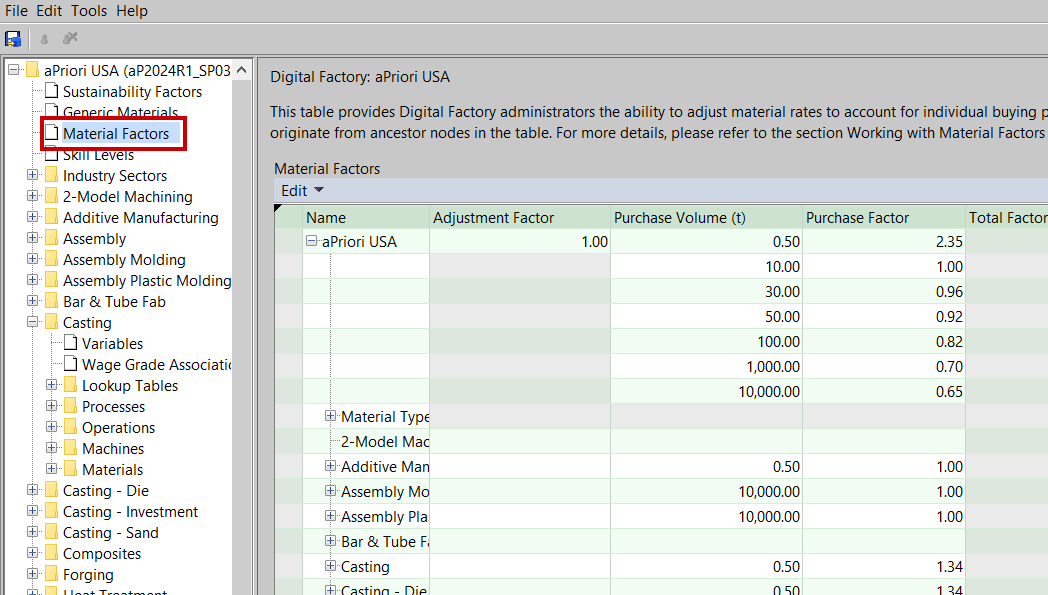When aPriori costs a part, it adjusts the material unit cost to account for both the following:
-
Buying power of the purchaser of the material
-
Volume of material purchased
You can configure this adjustment with the Material Factors table.
Figure: Material Factors table
Working with the Material Factors table is described in the following sections:
About Material Factors
Material unit cost for a given scenario is based on all the following values:
-
Base cost per unit for the current scenario, assuming average buying power, and assuming typical purchase volumes. This data is taken from the aPriori Regional Data Libraries or inherited from the parent Material Catalog Digital Factory. It appears in the Material Factors table in the read-only column Base Cost per Unit.
Typical purchase volumes are assumed to be the following:
-
1,000 metric tons for PC-ABS, Copolymer 25% Glass, Homopol 20% glass, and Acrylic PMMA.
-
10,000 metric tons all other plastic materials
-
10 metric tons for all other materials
-
-
Adjustment factor: reflects company-specific buying power for the current scenario. This is specified in the Adjustment Factor column of the Material Factors table.
-
Purchase factor: reflects the discount or premium associated with the current purchase volume for the current scenario (see Change material purchase volume in the aP Pro User Guide). This is specified in the Purchase Factor column of the Material Factors table.
The adjusted unit cost is the product of these three values.
Adjusted Unit Cost = Base Cost per Unit * Adjustment Factor * Purchase Factor
This adjusted unit cost is displayed under Material Unit Cost in aPriori Desktop, for example, in the Material Selection dialog and in the Material Information panel of the Manufacturing Process pane. Note that costs in the Material Factors table are not always cost per unit mass (they may, for example, be cost per unit area). But the Material Unit Cost in aPriori Desktop is always cost per unit mass, so the value in the Material Factors table is converted to cost per unit mass when necessary.
